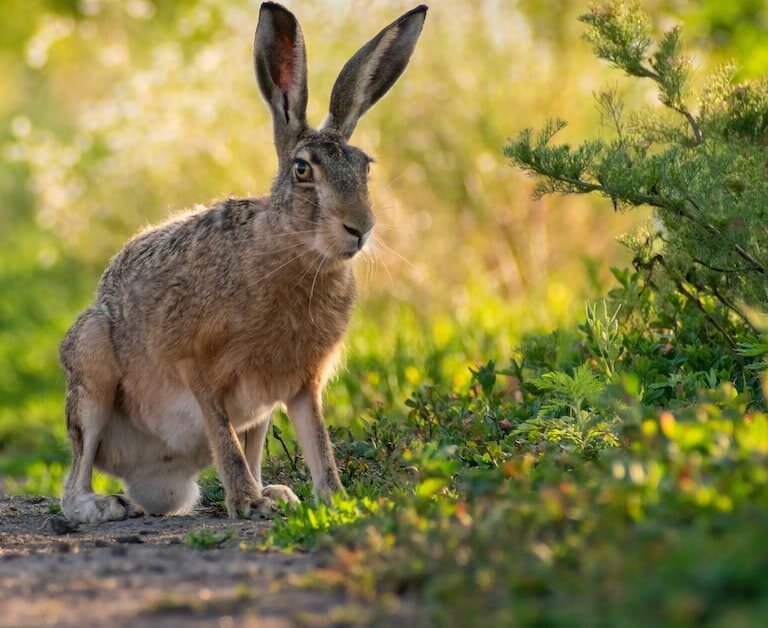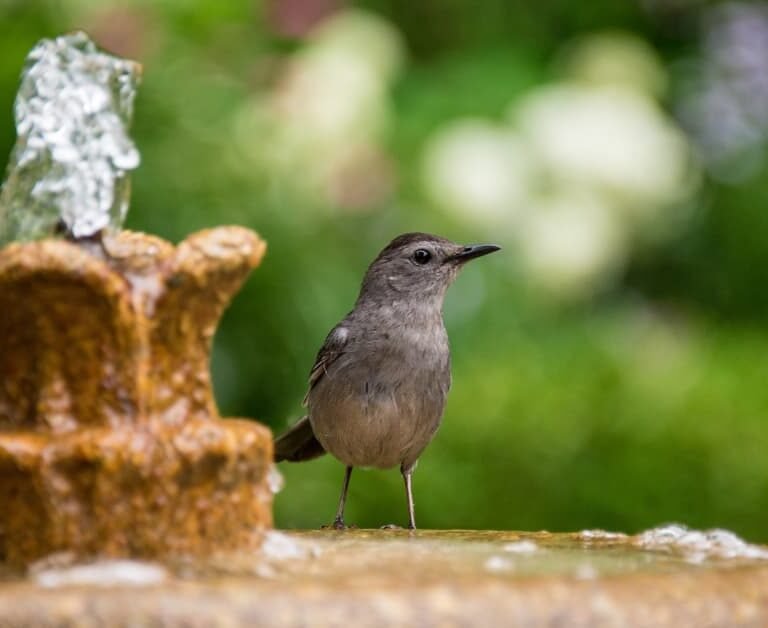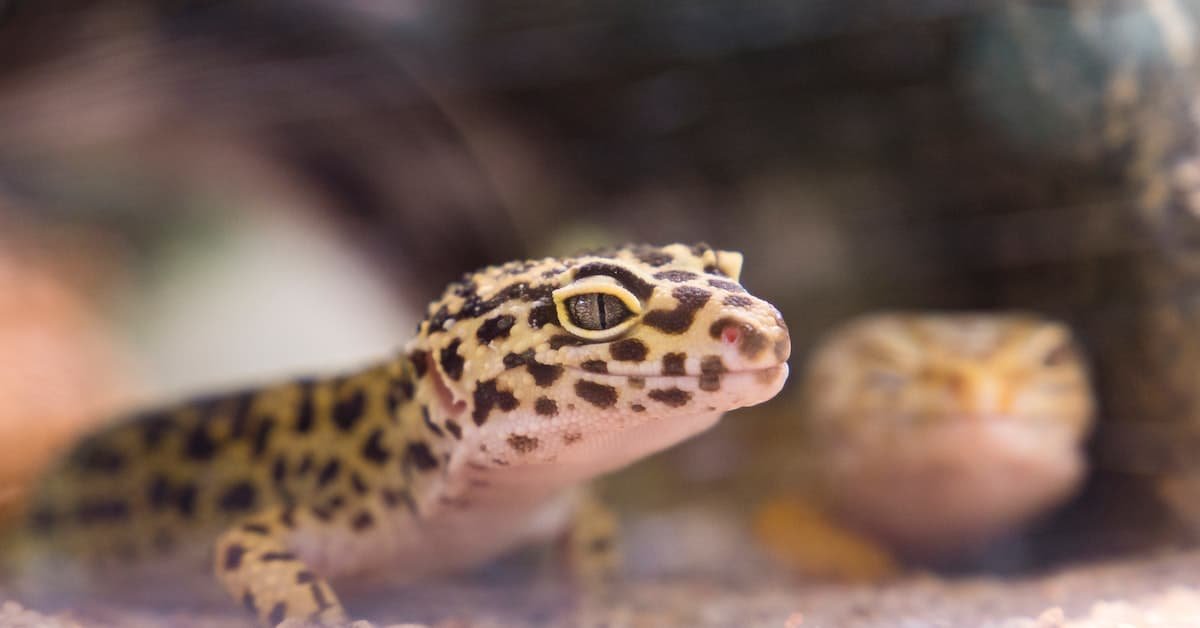
In this ultimate guide to lizard lifespan, we will explore the factors and variations that influence these fascinating creatures’ longevity.
From the Iguana’s remarkable two-decade lifespan to the vibrant colors of the Leopard Gecko, each lizard species has its own story to tell.
So, join us as we look into the world of lizard lifespan. Discover the secrets to keeping our scaly friends happy and thriving with ”How Long Do Lizards Live?”.
Short Summary
- Different lizard species have different lifespans, the Leopard Gecko can live up to 20 years in captivity. The Green Anole lives 2 to 8 years.
- Creating a suitable habitat with properly sized enclosures and natural elements. Rocks, plants, and wood branches for climbing are crucial for the well-being and longevity of lizards.
- Temperature and lighting are essential for the health of lizards. They rely on external heat sources to regulate their body temperature. Provide warming spotlights and temperature gradients.
- Regular veterinary check-ups, maintaining a clean habitat, and providing a nutritious diet are vital for the growth, development, and health of pet lizards.
How Long Do Lizards Live: Factors and Variations
Out in the wild, over 4,000 lizard species exist. While certain species have short lifespans, not exceeding three years, others can thrive for as long as two decades.
In this overview, we’ll explore eight lizards and their life expectancies:
Leopard Gecko – 10 to 20 years
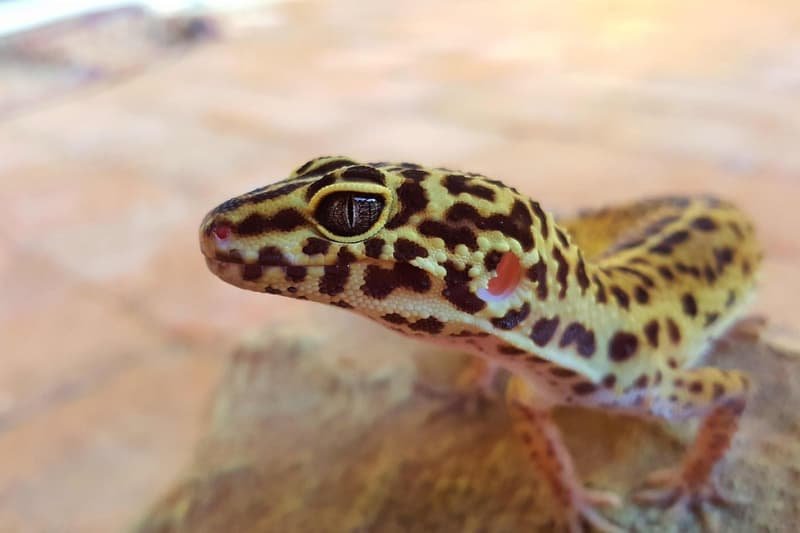
The leopard gecko is a popular and docile pet lizard known for its striking patterns and colors.
Native to Pakistan and India, these small reptiles are perfect for beginner reptile keepers due to their ease of care.
They have a life expectancy of 10 to 20 years, making them long-term companions for dedicated reptile enthusiasts.
Bearded Dragon – 10 to 15 years
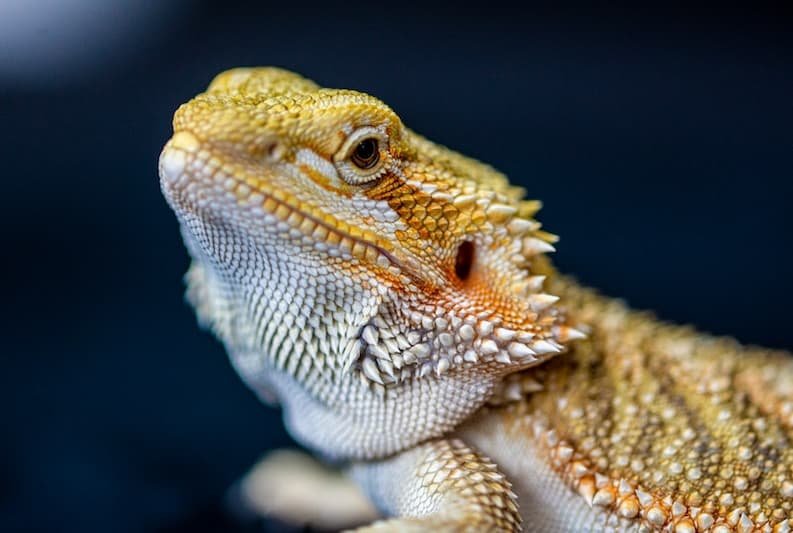
Bearded dragons are among the most beloved pet lizards globally.
They are admired for their friendly personalities and unique “beard” display when threatened or stressed.
These lizards hail from Australia and are well-adapted to a variety of habitats.
With a life expectancy of 10 to 15 years, bearded dragons form strong bonds with their owners and thrive on a diet of insects, greens, and occasional fruits.
Green Anole – 2 to 8 years
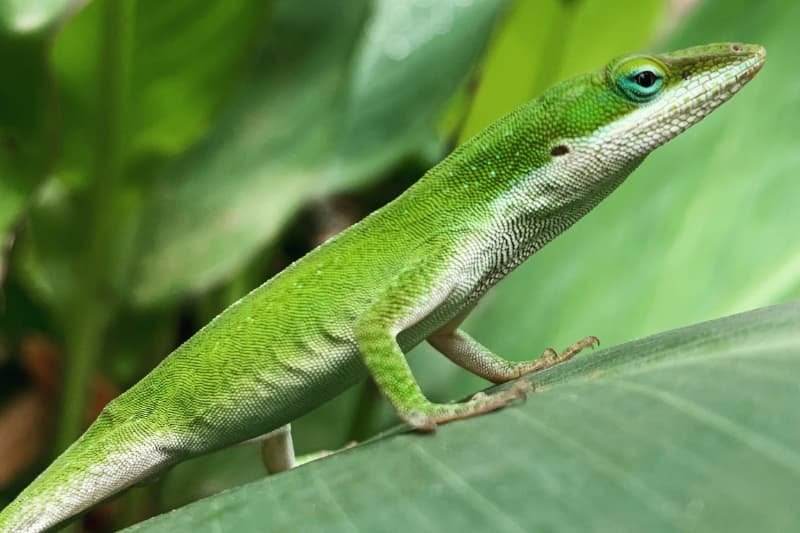
The green anole is often called the American chameleon due to its color-changing ability. It is a small tree lizard found in the southeastern United States and the Caribbean.
Their life expectancy is short – 2 to 8 years, but their vivid green coloration, and agility, make them popular as beginner reptile pets.
Crested Gecko – 15 to 20 years
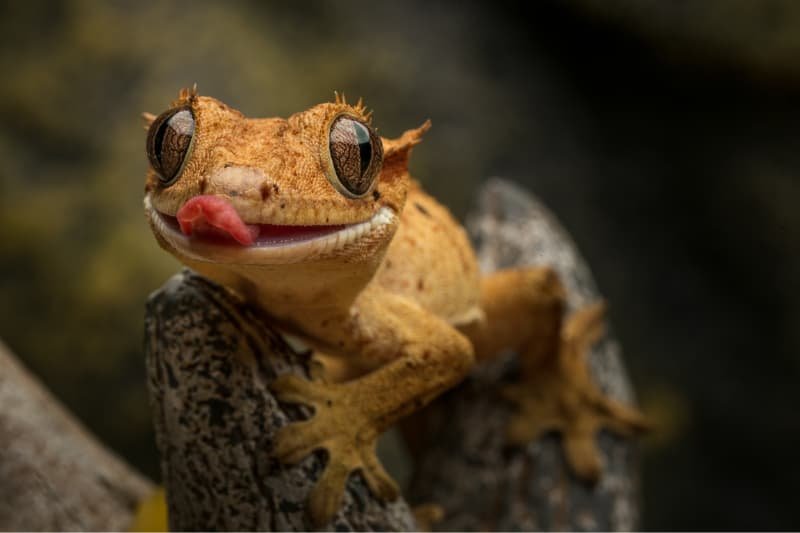
The crested gecko, native to New Caledonia, is a fascinating and distinctive lizard species with unique, fringed crests above its eyes.
As a nocturnal species, they are most active during the night, which can be a delight to observe.
With proper care and a diet of readily available gecko food, these lizards can live up to 15 to 20 years.
Blue-tongued Skink – 15 to 20 years
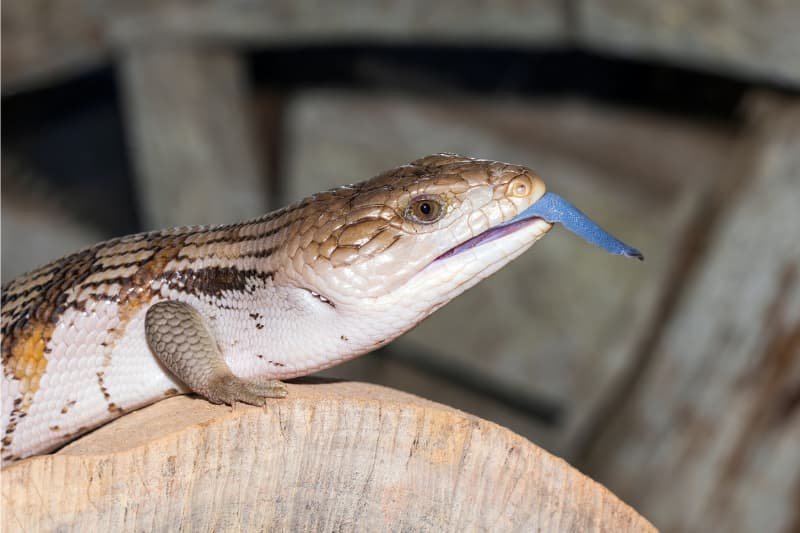
The blue-tongued skink is known for their blue tongue, which they use as a defensive display.
Found in various parts of Australia and Indonesia, these omnivorous lizards are long-lived, with a life expectancy of 15 to 20 years.
They are generally docile and make excellent pets for those who can accommodate their size and dietary needs.
Jackson’s Chameleon – 5 to 10 years

From East Africa, this chameleon is known for its three prominent horns and vibrant colors. The colors often change depending on their mood and environment.
With a life expectancy of 5 to 10 years, they need attentive care, particularly for their hydration and humidity needs.
Frilled Dragon – 10 to 15 years
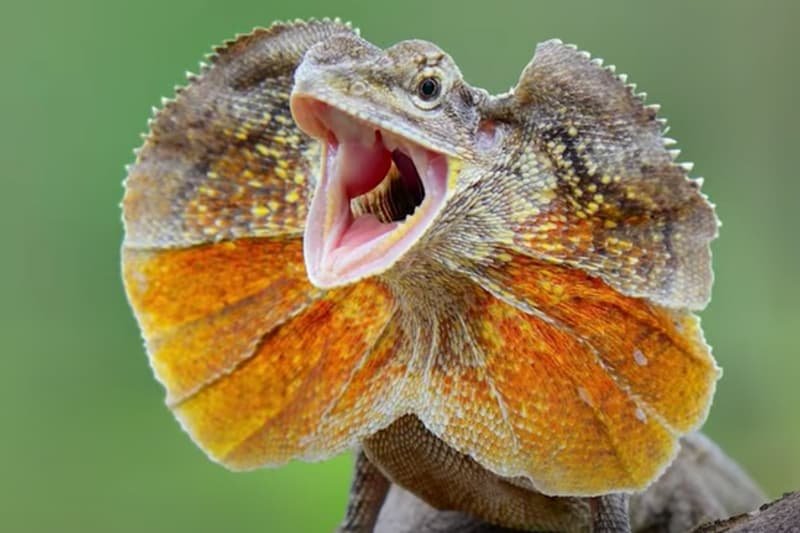
The frilled dragon is a visually stunning lizard species native to northern Australia and southern New Guinea.
When threatened, they open up a large, colorful frill around their neck to intimidate predators.
As tree creatures, they enjoy climbing and need a spacious enclosure. With proper care, they can live up to 10 to 15 years as captivating pets.
Iguana – 10 to 20 years (Some species can live up to 20-25 years)
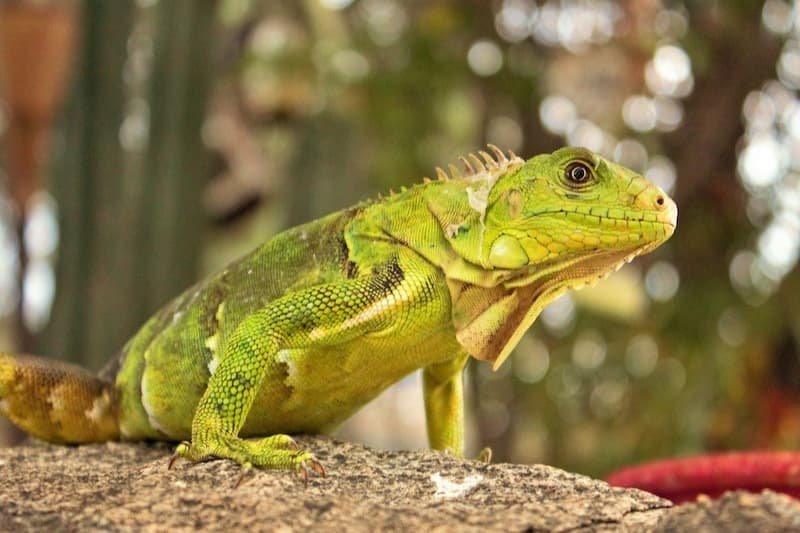
Iguanas are lizards found in tropical regions of Central and South America, as well as some Caribbean islands.
They come in various sizes and colors, with the green iguana being the most well-known species in the pet trade.
Their life expectancy ranges from 10 to 20 years. Some species, like the blue iguana, can live up to 20-25 years in captivity with proper care.
Creating the Perfect Habitat
Creating an ideal habitat is essential for the well-being and longevity of these reptiles. Lizard habitat requirements are diverse and depend on the species.
To ensure a naturalistic environment, it is important to consider the following factors:
- Space and Enclosure: Lizards need suitable-sized aquariums or terrariums that allow them to move freely. The size of the enclosure should be appropriate for the specific species, providing enough room for climbing and exploring.
- Landscaping and Decor: Adding natural elements such as rocks, logs, and plants can help create a stimulating and pleasing environment. Wood branches are essential for lizards that enjoy climbing.
- Temperature and Lighting: Lizards are ectothermic animals, meaning they rely on external sources of heat to regulate their body temperature. Providing a warming spotlight and a temperature gradient within the enclosure is crucial.
By understanding these lizard habitat requirements, pet owners can create a naturalistic environment that promotes the well-being and longevity of their reptilian companions.
Tips for Ensuring Longevity
To promote the longevity of these reptiles, it is important to implement certain strategies. Proper lizard health care is crucial in ensuring their well-being and preventing common lizard diseases.
Regular veterinary check-ups are essential to monitor their overall health and catch any potential issues early on.
Maintaining a clean and hygienic habitat is also important to prevent the spread of bacteria and parasites. Additionally, providing a balanced and nutritious diet is vital for their growth and development.
Lizards require a variety of food items, such as insects, fruits, and vegetables, to meet their nutritional needs.
It is also important to provide them with ample space and suitable living conditions, including appropriate temperature and humidity levels.
By following these guidelines, you can help ensure the long and healthy life of your pet lizard.
FAQs:
Are there any specific factors that can shorten a lizard’s lifespan in captivity?
Factors impacting a lizard’s lifespan in captivity include inadequate habitat conditions, such as insufficient space, inappropriate temperature, and humidity levels, and a lack of suitable hiding spots.
Can lizards live together in the same enclosure or do they need to be housed individually?
Lizard aggression is a concern when considering communal housing. However, some species of lizards can coexist if provided with adequate space, hiding spots, and resources.
The benefits of communal housing include social interaction and reduced stress levels.
Are there any common health issues or diseases that can affect a lizard’s lifespan?
Common health issues and diseases can impact a lizard’s lifespan. These include metabolic bone disease, respiratory infections, parasitic infestations, and mouth rot.
What are some signs that a lizard may be approaching the end of its lifespan?
Signs of aging in lizards include decreased activity, loss of appetite, weight loss, and changes in skin and coloration.


